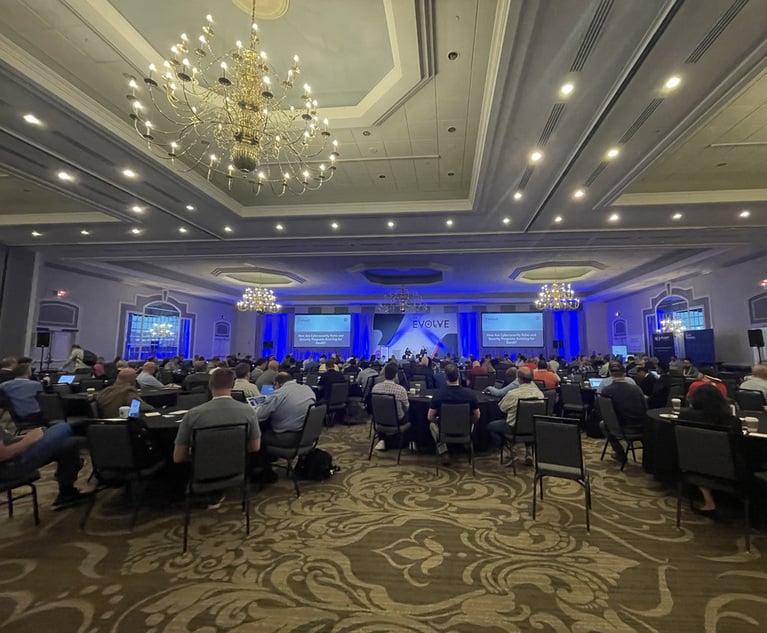 When smartphones and tablets stealmarket share from personal computers every year, using mobiletechnology to interact with your insurance company is the newnormal.
When smartphones and tablets stealmarket share from personal computers every year, using mobiletechnology to interact with your insurance company is the newnormal.
The aftermath of Superstorm Sandy showed thatconsumers are increasingly relying on mobile devices to conductbusiness. New Jersey and New York insurers offering mobileclaims applications saw a sharp spike in usage as consumers soughtquick and easy ways to start the recovery process. Additionally,social media and satellite-equipped mobile catastrophic responseunits allowed insurers to connect with policyholders in innovativeways when they needed the industry the most.
|This evolution shouldn't surprise anyone. Over the years,consumer behavior trend lines regarding technology and electroniccommunications have become well established. A web presence, callcenter and local agents are no longer sufficient. Consumers wantand expect to interact with their insurers, not only over multiplechannels, but over multiple devices. They want to access customizedinformation with tablets and smart phones that help them take careof business while on the go.
|As a result, insurers must meet those expectations any time, anyplace and any way that is convenient for the customer. Manyinsurers already have systems that allow consumers to pay theirinsurance premiums, get a quote and access some policy informationright from a smartphone, tablet or personal computer. And thenumber of apps continues to grow as insurers develop technologythat accomplishes common tasks such as filing a claim or gettingroadside assistance.
|Related: Read "Health Care Back in theRing."
|At the same time technology is solving problems for consumers,it is also benefiting agents and brokers by freeing them fromroutine tasks. With many of the repetitive administrative issuesresolved, agents and brokers are free to offer higher-qualitypersonal interaction when customers call or stop in the office.Through electronic communications, agents can more easily track acustomer's transactions and changes associated with a policy inreal time. This may lead to new sales opportunities or the abilityto interact with a policyholder to ensure they are aware of alltheir coverage options.
|Technology Meets Regulation
|But while technology is opening new windows of communication,state regulatory and legal environments can prevent the industryfrom more fully delivering even basic products and services that aconsumer may desire. Some states prohibit certain discounts thatcould help lower the cost of insurance or provide an incentive totake loss control measures.
|For example, as recently as early last year, nearly every statemade it impossible for consumers to use technology to show proof ofinsurance coverage during a traffic stop or access a copy of theirpolicy online. Fortunately, the law is starting to catch up toconsumer habits. Since that time, policymakers in nearly half ofthe country have enacted laws allowing consumers to use smartphonesto show they have insurance. This means instead of digging aroundin a glove compartment hoping to find a current insuranceidentification card, policyholders can simply display theinformation on their smart phone.
||At the beginning of 2013, only 7 states permitted the use ofe-cards. However, electronic display of proof of insurance(alternatively called e-card) became one of the year's hotinsurance-related legislative trends, with 17 states (Alaska,Arkansas, Colorado, Georgia, Indiana, Iowa, Kansas, Kentucky,Maine, Mississippi, North Dakota, Oregon, Tennessee, Texas, Utah,Washington and Wyoming) passing laws. This list is likely to growas legislation is awaiting signature by governors in Florida,Illinois, Missouri and Wisconsin.
|In addition to the spread of e-card laws, we are also seeingrelated legislative initiatives develop. Just as e-cards enjoyedearly legislative success in 2012 and picked up steam in 2013, wemay see similar growth in the number of states that promote greateraccess to policy information through electronic delivery of policyinformation and the ability to post policies online in 2014.
|Related: Read "Major Misfire."
|This year, Idaho, Kansas and Minnesota approved laws allowingelectronic delivery of insurance documents. Kentucky issued abulletin allowing e-delivery, and legislation is moving or on thegovernor's desk in California, Florida, Missouri, Pennsylvania andTexas.
|Generally these laws allow insurers—with the express consent ofthe consumer—to electronically conduct most insurance transactions,including policy application, issuance and cancellation. Thelegislation is based on "e-transaction" model legislation that wasthe subject of industry-wide discussion earlier this year. Thismodel provides that the electronic delivery of a notice or documentis considered equivalent to other delivery methods such asfirst-class or certified mail.
|Electronic delivery of insurance documents will give consumersand insurers more choices and greater flexibility in how policiesare serviced. These laws are moving the interaction betweencustomers and insurers away from the Pony Express and into the 21stcentury.
|Public policymakers also see the benefits of having insurancepolicies available electronically. Six states (Alaska, Arizona,Kansas, Minnesota, Oklahoma and Texas) have approved laws in 2013that will allow consumers to access their insurance policy througha website. Bills are on the governor's desk in Florida andIllinois, and Pennsylvania is considering legislation.
|Generally these new laws permit insurers to post policies andendorsements on their websites if no personal or privilegedinformation is disclosed on the policy in lieu of mailing thedocuments to policyholders. Insurers must provide hard copies topolicyholders upon request and without charge.
|What do these legislative trends mean for agents or brokers?These laws simplify how agents stay engaged with their insureds.Any standard client agreement should provide for carbon copies ofevery email sent by an insurer to any client who chooses electronicdelivery, something for which some insurers offer a discount. Asagents, you'll receive real-time notice whenever an insurer talksto your client via email, allowing you to track important events inthe life of the policy.
|Related: Read "From e-Cards to Cats."
|Agents will receive immediate notice of renewal rather thanwaiting for snail mail, giving you more time to reach out to theclient to discuss possible changes to the policy or changingcarriers. For less technically inclined clients, agents and brokerscan and should offer to create online profiles with insurers thatallow them to access and print out any documents the client mightrequest.
|Technological innovation and the market disruption it can entailoften results in great benefit to those who see opportunity whereothers see doors closing. These latest changes to how documents aredelivered to policyholders are another example. The only questionis, will you or your competitors seize the opportunity first?
Want to continue reading?
Become a Free PropertyCasualty360 Digital Reader
Your access to unlimited PropertyCasualty360 content isn’t changing.
Once you are an ALM digital member, you’ll receive:
- All PropertyCasualty360.com news coverage, best practices, and in-depth analysis.
- Educational webcasts, resources from industry leaders, and informative newsletters.
- Other award-winning websites including BenefitsPRO.com and ThinkAdvisor.com.
Already have an account? Sign In
© 2024 ALM Global, LLC, All Rights Reserved. Request academic re-use from www.copyright.com. All other uses, submit a request to [email protected]. For more information visit Asset & Logo Licensing.








